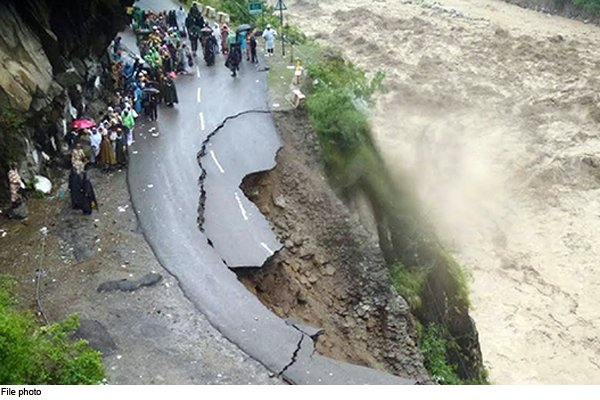New Delhi: According to an independent analysis released by Council on Energy, Environment and Water (CEEW), more than 85 percent of the districts in Uttarakhand, which house more than nine crore people, are hotspots of extreme floods and its related incidents.

Not only this, the frequency and intensity of extreme flood events in Uttarakhand has increased fourfold since 1970. Similarly, the incidence of floods related to landslides, cloudbursts, glacial lake outbreaks, etc. has also increased fourfold, causing extensive damage. Chamoli, Haridwar, Nainital, Pithoragarh and Uttarkashi districts of the state are at high risk of flooding.
Avinash Mohanty, Program Lead at CEEW explains, “The recent devastating floods in Uttarakhand are evidence that the climate crisis can no longer be ignored. In the last 20 years, Uttarakhand has lost more than 50,000 hectares of forest, causing micro-climatic changes in the region. This has led to an increase in extreme climatic events in the state. Focusing on land use based forest restoration can not only remove the climate imbalance but can also help in promoting sustainable tourism in the state. ” He further says, “Now the situation is not such that work on these subjects should be taken as an option. These issues are national imperatives. “
Further, Chief Executive Officer of CEEW, Arunabh Ghosh says, “The tragedy in Uttarakhand reiterates the need for detailed district-level climate risk assessments and increasing adaptive and resilience capacity at various administrative levels. Furthermore, given that sensitive communities are often most affected by extreme climate events, they should be made an integral part of the risk assessment plan. Finally, with the increasing frequency of extreme climate events, India urgently needs to develop a nationwide but decentralized and structured, real-time digital emergency monitoring and management system. India should create a more flexible and climate-friendly path to economic prosperity and human development. “
Keep in mind that according to a report released by the Ministry of Earth Sciences last year, the Hindu Kush Himalayas experienced a temperature rise of around 1.3 degree Celsius during 1951–2014. The rise in temperature has caused micro-climate change and rapid avalanche retreat in Uttarakhand, causing frequent and recurrent flash floods. In the coming years, it could also affect 32 major infrastructure projects underway in the state, valued at over Rs 150 crore each.
With the increase in extreme flood events, the CEEV analysis also revealed that drought in Uttarakhand had increased twice since 1970 and more than 69 percent of the districts in the state were hit by it. Also, in the last decade, floods and drought came together in Almora, Nainital and Pithoragarh districts. This further complicates risk-informed decision making for policy makers and response teams.
A 2015 report on climate risk assessment by CEEW, along with other global partners, indicated a six-fold increase in the frequency of flooding in the Ganges Basin, the century’s high passage. Another CEEV study published in 2020 found that 75 percent of the district and half of India’s population were vulnerable to extreme climatic events.
